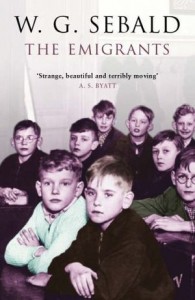
I came late to literature, after studying philosophy. The fictions that first ignited my desire to write thus fell into that oft-maligned category, “novels of ideas”: Dostoevsky’s The Idiot and The Possessed, works by Iris Murdoch. It wasn’t until I began writing fiction myself that I encountered the German-emigré writer W. G. Sebald, through one of his early books, The Emigrants.
It consists of four variations on the theme of obliteration: four investigations of interrupted lives, unpeeled with gravity and respect. Max, as Sebald was known to his students at the University of East Anglia, invented a hauntingly precise style of interrogating the present and the past that blurred the line between fiction and fact. Here was a writer who blended classic narration with historic images and factual asides to build stories both delicate and dense, measured yet gothic, filled with observations of deep seriousness and irrepressible grotesques. His minor characters were like peculiar creatures in the margins of illuminated medieval manuscripts, entwined around the formal Latin text. His sentences too were formal, encrusted with clauses and parenthetical asides, yet their syntax worked a ruminative magic.
But what he gave me was permission: to invent, to express my own idiosyncrasy. Fiction, he showed us, is endlessly malleable. It is a cupboard bursting with the strange and arcane as well as the traditional tools of character and plot. Anything can be a story, so long as the intention and language are true.


